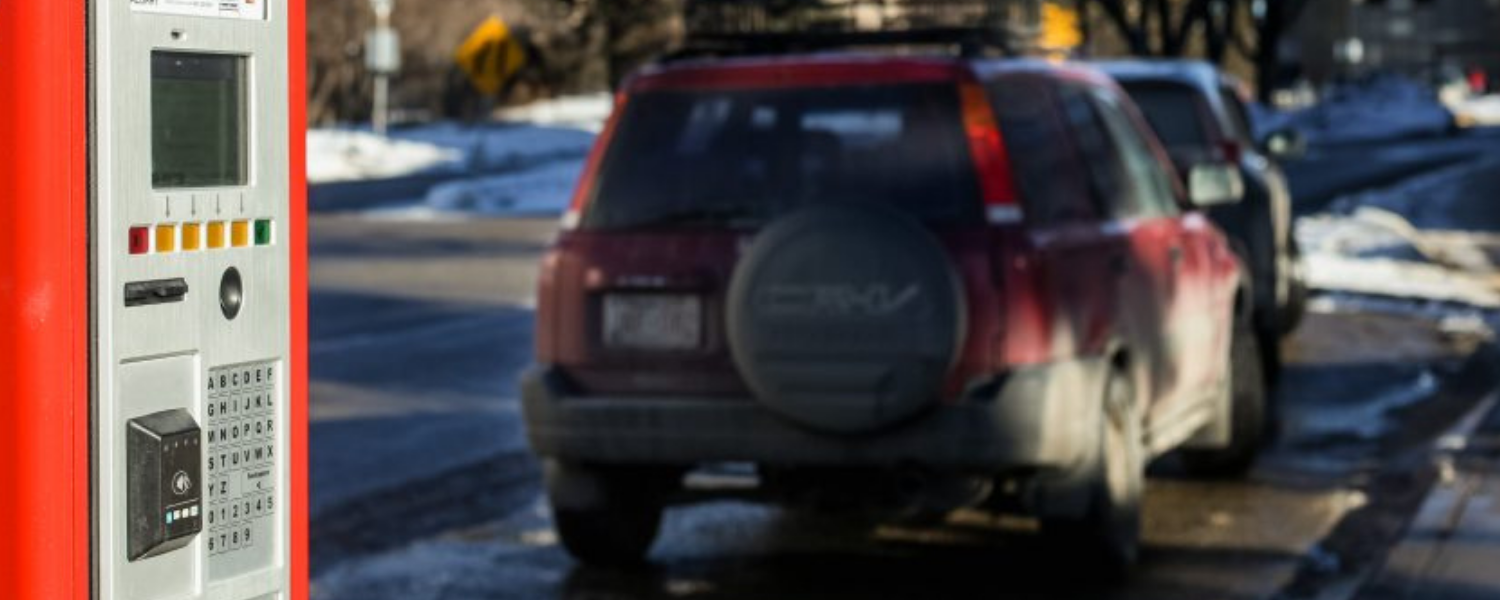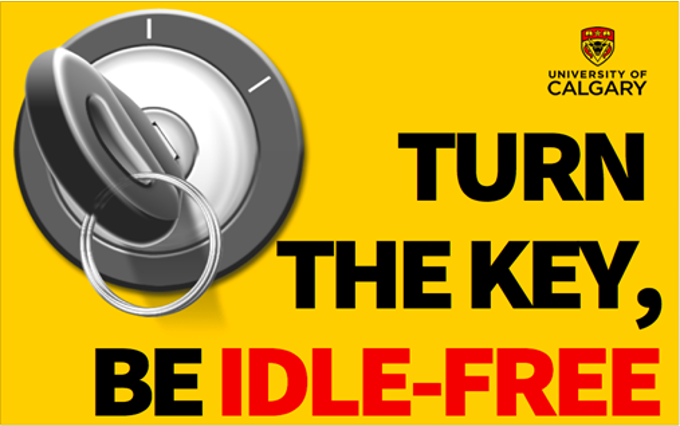
Anti-Idling Case Study
Overview:
When vehicles are left running while parked, they produce emissions that contribute to air pollution and climate change, affecting our health and the environment. In support of the University of Calgary’s commitment to the University and Collage Presidents’ Climate Change Statement of Action for Canada and the University of Calgary Sustainability Policy, the University of Calgary Idle Free program was initiated in 2010.
Since January 1, 2011, idling is a fineable charge at UCalgary, however Parking and Transportation Services has not enforced this rule since 2010 (University of Calgary Our Sustainable Campus, n.d.). With roughly 40,000 vehicle trips to and from the university every day, small changes in behaviour have the potential make positive environmental impacts. It would take roughly 3.2 million trees to offset our greenhouse gas emissions with the current trends (University of Calgary Our Sustainable Campus, n.d.).
To reduce idling at UCalgary, the Peer Helpers developed the following objectives for their campaign:
- Develop and awareness campaign to educate students, faculty and staff about the environmental and economic costs of idling
- Gather information on common idling locations and time periods
- Decrease the harmful impacts of idling and set a trend towards an idle free UCalgary
Outcomes:
- Created an image and message to effectively communicate anti-idling with the campus community.
- Created an anti-idling pledge system.
- Integrated anti-idling outreach into the Sustainable Offices Program. This resulted in producing the “Turn the Key: Be Idle Free” sustainability moment presentation as well as a short video.
- Conducted in-person outreach.
The Peer Helpers made an “Anti-Idling Observation Sheet” to collect data. The purpose of the survey was to provide the researchers with key information on the extent of UCalgary’s idling habits, including patterns in locations, time of day, weather and demographics. They identified the following locations as idling hot spots: ICT loop, Craigie loop and the MacEwan hall loop. Data collection was carried out sporadically from 4:00 pm to 5:00 pm over several weeks in December and January.
Their outreach campaign took place at ICT and the Craigie loop. The Peer Helpers designed wallet cards and a pledge system to act as conversation starters. 34 people agreed to sign the pledge, and the Peer Helpers answered numerous questions about idling from members of the campus community. During their outreach, the Peer Helpers realized that while “Idle Free Zone” signs were posted in the hot-spot areas, many of the individuals they interacted with were unfamiliar with the term “idling”.
Next Steps:
- Encourage more data collection using the Anti-Idling observation sheet.
- Advise UCalgary Parking and Transportation Services to increase the number of idling signs for better visibility and amend existing signs from “Idle-Free Zone” to “Idle-Free Zone – Engines Off” to target the specific behaviour.
- Advocate for Parking and Transportation Services and the Office of Sustainability to conduct anti-idle campaigns every semester. Given the high turnover each semester as students start and finish their degrees, there is a need for sustained education efforts at UCalgary to ensure that the campus population reduces instances of idling.

Jazlyn Fialkow

Jazlyn Fialkow
